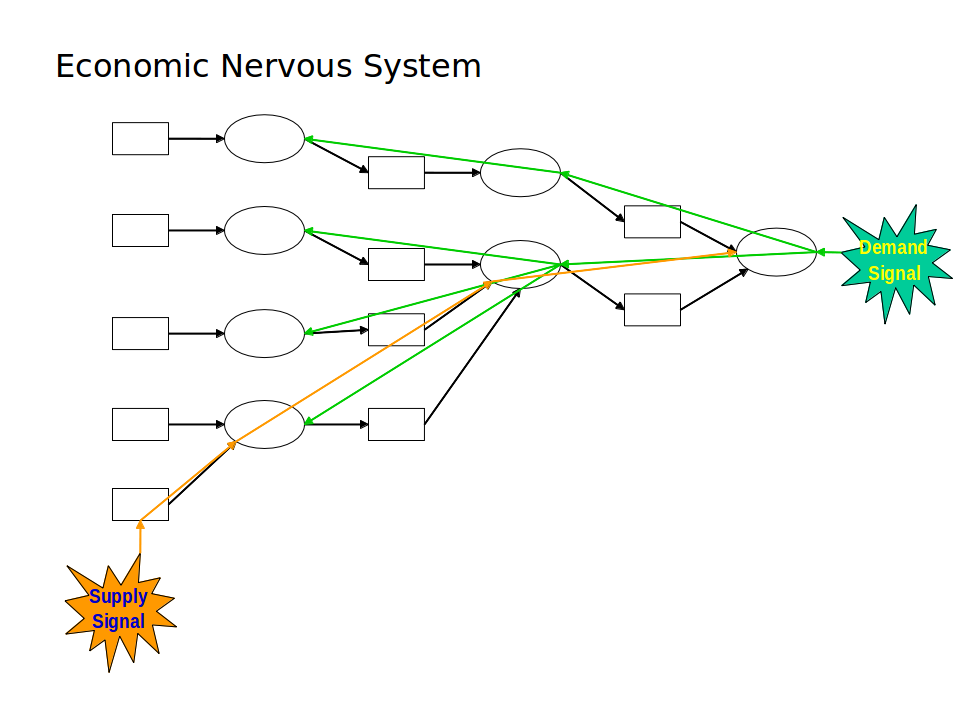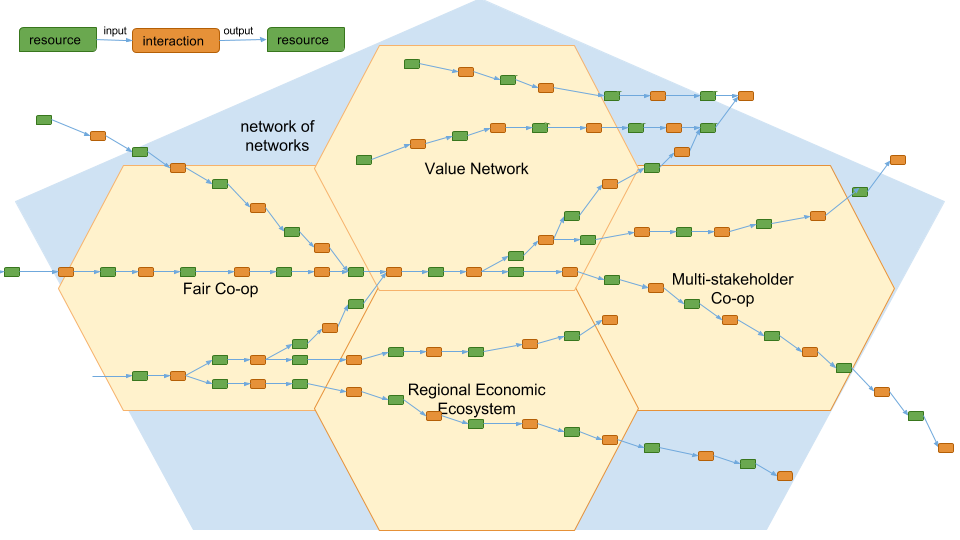How the Demand Signals Used by Current Supply Chains Can Serve Broader Mutual Coordination
- see also this ongoing draft document by Bob Haugen
Discussion
The Economic Nervous System
"Most such discussions (about Economic Calculation) miss what I talked about here:
The short version is that the people who are still talking about the calculation problem do not seem to understand how planning and replanning is done now in capitalist supply chains (as well as US military supply chains), by propagating signals from the end customers or users back along the networks.
"I have maintained that the actual signals by which the advanced capitalist supply chains coordinate their physical production and transportation are valid precursors to, and directly usable by, a very different economic system. They do not depend at all on prices. Those signals are always through a medium, but sometimes indirect (as between agents who do not directly coordinate with each other) and sometimes direct (the agents do coordinate directly with each other, but use messages via some medium to do so)."
This (below) is a resource flow diagram. The rectangles are resources, the ovals are processes (which might represent some kind of manufacturing organization).
Here's another resource flow diagram.
Using Demand Sensing and Need Sensing
Bob Haugen:
"Demand Sensing: With the rush of so-called “big data” - notably the escalation of real-time data - now available for demand forecasting, new toolsets are required to drive advanced inventory planning. Such tools are now available: They synthesize massive amounts of data - much of it real-time - such as multiple customer point-of-sale (POS) data streams, variables related to weather conditions, economic indicators, sales of competing products, social media hype, and a host of additional indicators. The Journal of Business Forecasting notes that demand sensing sorts out the flood of data in a structured way to recognize complex patterns and to separate actionable demand signals from a sea of “noise.” Demand sensing technology has already been adopted by companies that are recognized as having the most progressively managed supply chains. Indeed, investments in demand sensing solutions are growing more rapidly than supply chain spending in general. According to a recent IDC Marketscape assessment of sensing and planning vendors published in September 2013, demand sensing initiatives accounted for 8.5 percent of supply chain spending in 2013, and are expected to reach 8.7 percent in 2015. http://www.supplychain247.com/article/new_perspectives_on_the_value_of_demand_sensing
Need Sensing: Let us propose that a demand signals for a Mutual Coordination Economy will be based on human and ecological needs in terms of use-value, and not on needs for profit (exchange-value). How will those signals become known? Certainly point-of-use signals can be captured somewhat as they are now. They will signal that somebody has used something, and it it is a repetitively-used item, should be replaced.
But think about the counterparts of demand sensing in terms of sensing human and ecological needs, i.e. Need sensing
Population density alone signals a constellation of human needs and possibly ecological dangers.
New births, deaths, movements of people, all become signals of human needs.
Facebook, Google and Amazon now mine peoples’ searches and statements online for signals of demand, aiming to sell you something. But those same kinds of signals could be used to forecast human needs more benignly." ([1])
More Information
- How the Signals used by Capitalist Supply Chains could serve a Mutual Coordination Economy (P2PF blog, 2016-02-10)

